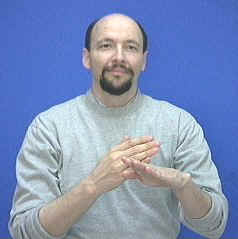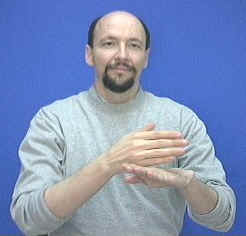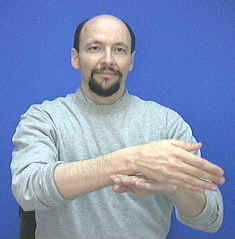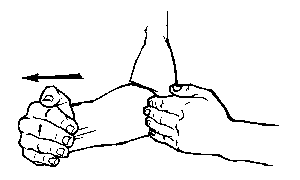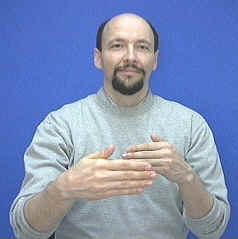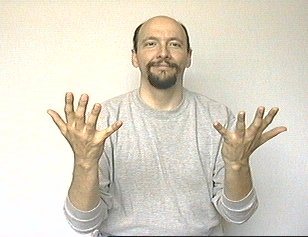American Sign Language: "after"
There are several "right" ways to sign "AFTER." The right choice depends on the situation. Make sure to learn the first two main versions"ACROSS-after" and "AFTER"-from-then-on
The main version of the sign AFTER has mutated to be done exactly like the sign "ACROSS." You will see a lot of people signing phrases like: "ACROSS WORK I GO STORE. NEED ANYTHING?" to mean "I'm going to be stopping at the store after work. Do you need anything?"
So, you really should learn the "ACROSS" version of "after" because it is very commonly used by most adult native Deaf ASL signers.
Both hands are in "flat" handshapes. The base hand is palm down and doesn't move. The dominant hand is thumb-side up and slides over the top of the base hand.
ACROSS / over / after:
ACROSS / AFTER:
Also see: "ACROSS"
AFTER: "From then on." / "From a certain point onward."This is a good version to use when you are discussing timelines and scheduling.
The dominant hand moves forward. The base hand is stationary.
AFTER:
This version of "after" is good for concepts like "from now on," "from then on," or "ever after." I notice that for those concepts I modify the sign "AFTER" by putting a small downward and back up arc in the forward movement.
FROM-NOW-ON:
Sample sentence: YESTERDAY, SCHOOL FINISH AFTER-[FROM-THEN-ON] what-DO YOU? (What did you do after school yesterday?)
Of course, you could (and often should) just sign "FINISH" in many sentences involving the concept of "after." For example, "WORK FINISH, #DO-DO YOU?" Would be an ASL way of saying, "What are you doing after work?"
FINISH:
You can learn sign language online at American
Sign Language
(ASL) University ™
Sign language lessons and resources. Dr. William Vicars © Lifeprint.com
